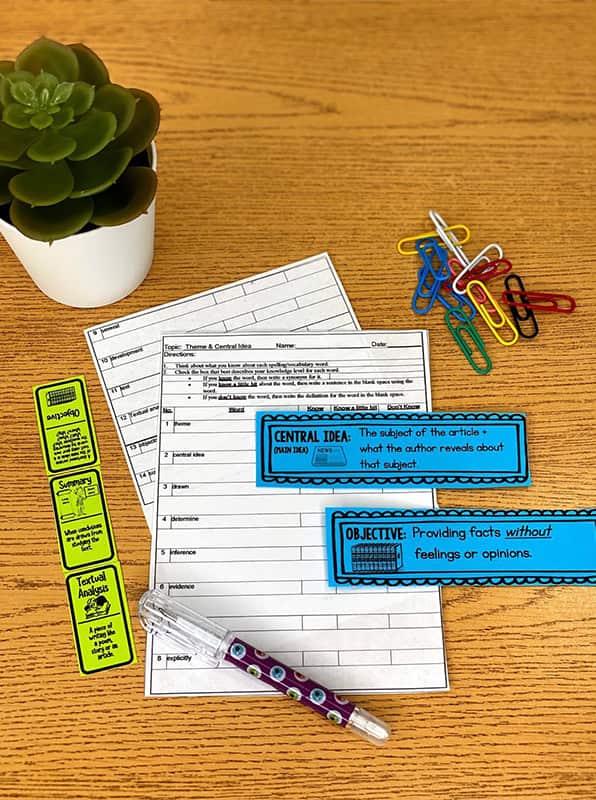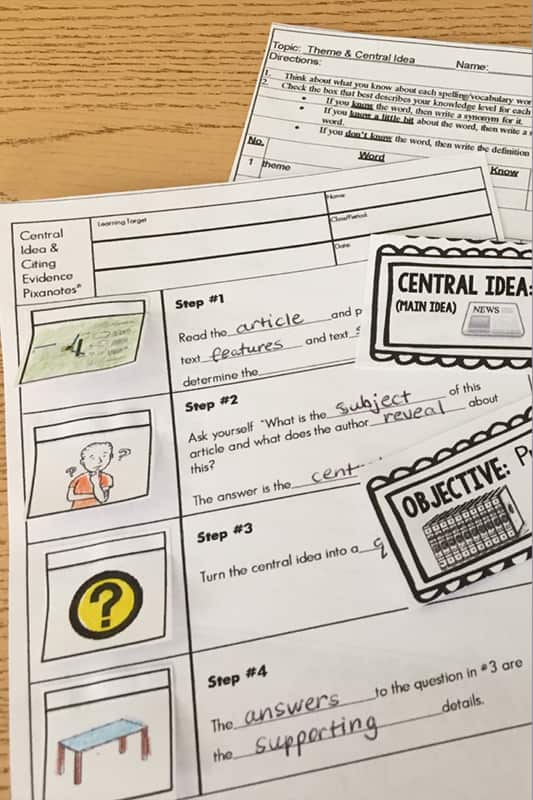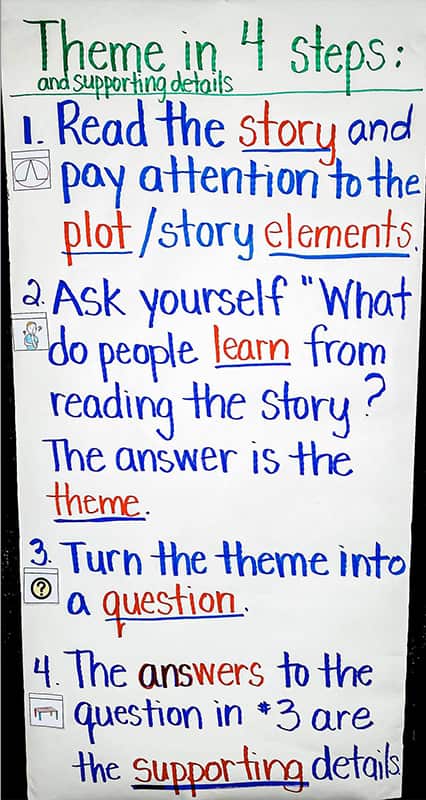Struggling readers might not have the foundational understanding or the recollection of the definitions of theme and central idea. So, I realized it was important to start by exploring and learning key vocabulary. After the students had an understanding of the terms, we worked together to find central idea through examining an article. Below is the formula we developed to help them find success with this skill.

A 4-Step Plan for Finding Central Idea
Even once my students seemed to understand what central idea is, they still had a hard time pulling it out of an article. So, I started to think aloud. I talked as if I were a student trying to determine the central idea, and I asked myself questions. I heard some “Oh! That’s how you do it?” type of remarks, and it was then that I realized they needed a recipe or formula to help them figure out exactly how to get to the central idea and supporting details. So, I made these four steps for them to follow:
- Read the article, and pay attention to the text features and structures to determine the subject of the article.
- Ask yourself, “What is the subject of the article, and what does the author reveal about the subject?” (That’s the central idea!)
- Turn the central idea into a question.
- Answer the question. The answers are the supporting details! (Which leads to citing evidence!)
I was amazed at how many lightbulbs came on when the students were using these steps! I think this was because they really did not know how to apply the definitions they have learned. It was kind of a lightbulb moment for me too, really. Teachers think some things are obvious when they really are not. Seeing this result was great news though! I discovered that I needed to focus on the “how” in terms of the standards I teach.

A 4-Step Plan for Finding Theme
And even better news? This same four-step process also applies to determining theme in a fiction text! It is just ever so slightly different:
- Read the story, and pay attention to the plot and story elements.
- Ask yourself “What do people learn from reading this story?” (That’s the theme!)
- Turn the theme into a question.
- Answer the question. The answers are the supporting details! (Which leads to citing evidence!)
Support for Students Working on Their Own
In my classroom, we took guided notes on the four steps for central idea and theme. Then I made big posters of these steps called anchor charts and hung them in the room. At home, parents could make posters too, but maybe on a smaller scale using a regular-sized piece of paper. Just be sure to hang them near the work area so that you can go through the steps like a checklist when analyzing a text.

Once we went through a few texts as a class, carefully making sure to work through each step, the students were ready to practice on their own. I provided students with creative options on a menu that required the use of the steps so they could process the content independently, in a way that matched their learning preferences. For example, students were offered the choice to make a poster reflecting the central idea of an article or to complete a graphic organizer.
I saw students able to really dig into the texts and create much more thoughtful representations of the central idea when they had a blueprint to follow. Parents could do this at home, too! Think of a topic that interests your child. Then go to commonlit.org and under the Library menu choose “Text Set.” You will find groups of nonfiction and fiction texts that are all on the same topic. Use one set to go through the steps and another for independent practice.
In summary, I’ve learned that struggling readers need explicit instruction that shows how to apply definitions to concepts like central idea and theme as well as how to use that information to analyze text. Having a blueprint makes this possible and helps us reach all learners.



